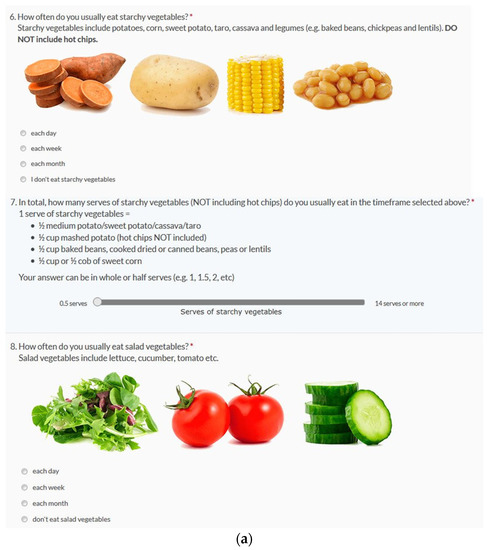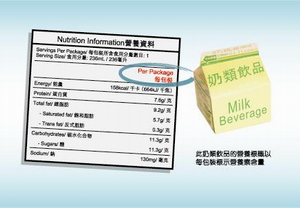40 what are nutrient claims on food labels
Nutrient Content Claims on a Food Label - LabelCalc The food product nutrition content must meet the strict guidelines and parameters set forth by the FDA in order to accurately make these nutrient content claims on a food label. For a more in-depth look at nutrient content claims, download this PDF. A Quick Reference Summary of Parameters Nutrient Claims on Food Labels - Food Smart Colorado Nutrient content claims describe a food and the level of a particular nutrient in that food. "Low fat" and "High fiber" are both examples of nutrient content claims. These types of claims usually appear on the front of a package and are regulated by the Food and Drug Administration (FDA).
nutrient claims on food labels chapter 2 Flashcards | Quizlet PLAY. Match. Gravity. claims on food labels. Click card to see definition 👆. Tap card to see definition 👆. marketing too directed toward health-conscious consumers. claims must comply with FDA regulations. Click again to see term 👆.

What are nutrient claims on food labels
› food › food-labeling-nutritionLabel Claims for Conventional Foods and Dietary Supplements Mar 07, 2022 · Among the claims that can be used on food and dietary supplement labels are three categories of claims that are defined by statute and/or FDA regulations: health claims, nutrient content claims ... › understanding-food-labelsUnderstanding food labels - Canada.ca Find information on food labels and how to understand them. Learn about nutrition facts tables, serving size, list of ingredients, % daily value and nutrition claims. Food labelling and packaging: Nutrition, health claims and ... - GOV.UK You have to follow certain rules if you want to make a nutrition claim (for example, low fat) or a health claim (for example, calcium helps maintain normal bones). You cannot claim or imply that...
What are nutrient claims on food labels. inspection.canada.ca › food-labels › labellingNutrient function claims - Health claims on food labels ... Nutrient function claims are not made for a food per se; they may only be made respecting the energy value or nutrients in a food. For example, the nutrient function claim "Milk helps build strong bones and teeth" is unacceptable, because a nutrient function claim refers to the nutritional function of energy or a nutrient ( e.g. , calcium) in a ... Food Label Nutrient Claims: Is It Really Good for You or Just a Gimmick ... GOOD SOURCE OF: Contains at least 10-19% of the Daily Value of a particular vitamin or nutrient per serving So now that you know what the standards are, double-check the food labels to make sure they match up with the nutrient claim listed. Just do the math and if it doesn't add up, avoid that product. food-guide.canada.ca › using-food-labelsUse food labels - Canada's Food Guide Oct 14, 2020 · Benefits of using food labels. Food labels provide information you can use to make informed choices about foods and drinks at the grocery store and at home. Food labels can help you: compare and choose products more easily; know what ingredients a food product contains; choose products with a little or a lot of the nutrients that are of ... Understanding Food Labels and Health Claims - Nutrition Essentials This label is called a Nutrition Facts panel, which gives information on the number of servings per container, the number of calories per serving, and certain nutrients. Specifically, it lists the macronutrients and four of the most important micronutrients people need to pay special attention to, such as Vitamin D, Calcium, Iron, and potassium.
Label Claims for Conventional Foods and Dietary Supplements Mar 07, 2022 · Among the claims that can be used on food and dietary supplement labels are three categories of claims that are defined by statute and/or FDA regulations: health claims, nutrient content claims ... Use food labels - Canada's Food Guide Oct 14, 2020 · Benefits of using food labels. Food labels provide information you can use to make informed choices about foods and drinks at the grocery store and at home. Food labels can help you: compare and choose products more easily; know what ingredients a food product contains; choose products with a little or a lot of the nutrients that are of ... Food Labels (for Teens) - Nemours KidsHealth A food with 5% or less of a nutrient is low in that nutrient. A food with 10%–19% of a nutrient is a good source of that nutrient. A food with 20% or more of a nutrient is high in that nutrient. The information on food labels is based on an average adult diet of 2,000 calories per day. What are Nutrient Content Claims on food labels? - Nutritionist Pro™ Nutrient Content Claims on Food Panels List energy, fat, carbohydrates, protein, and sodium. The nutritional information panels are a better guide than advertising. If the product contains food-inducing allergens, the label must say so. Some of the healthiest foods don't have labels, including fresh fruit and vegetables, and fish.
PDF Nutrient Label Claims - Veterans Affairs Nutrition Handouts • N23 Version 5.0 Page 1 of 4 Nutrient Label Claims The claims on food labels can be confusing. Knowing what these claims mean can help you choose healthier products. Sugar Claims What does this mean? Sugar Free, Zero Sugar, No Sugar, Without Sugar, Negligible Source of Sugar, Trivial Source of Sugar, Dietarily Nutrient Content Claim vs Health Claim - LabelCalc Nutrient content claims, which are commonly used on food labels, either refer to the amount of a nutrient in a product or compare the levels of a nutrient in that food to a similar reference food. When referring to the amount of a nutrient in a product, words such as "low," "free," and "high" are often used. Nutrient Claims on Food Labels Flashcards | Quizlet danaolsen2013 Nutrient Claims on Food Labels STUDY PLAY calorie free less than 5 kcal/serving low calorie 40 kcal or less per serving than the reference food reduced calorie 25% less kcal per serving than the reference food light/lite Nutrient content claims: what they mean - Canada.ca Table of nutrient-content claims and what they mean. The food provides an amount of a nutrient that is so small it likely won't have any effect on your body. The food is processed/modified so that it contains at least 25% less of the nutrient when compared with a similar product. Contains no added fats or oils or added butter or ghee, or ...
Foods to which vitamins, mineral nutrients and amino acids … Nutrient content claims: reference information Foods to which vitamins, mineral nutrients and amino acids may or must be added [D.03.002, FDR] Note: In the second column of this table, "mandatory" refers to nutrients that must be present in the food at levels specified in the Food and Drug Regulations (FDR). For some mandatory requirements, nutrients may not have to be …
Understanding food labels - Canada.ca Find information on food labels and how to understand them. Learn about nutrition facts tables, serving size, list of ingredients, % daily value and nutrition claims. ... other nutrient content claims. Percent daily value. How to calculate % daily value on a nutrition facts table, how to use % daily value. About food labels. What has to be ...
Foods With Nutrient Claims - recipes-food.info Offer Details: 101.62 Food nutrient content claims for fat, fatty acid, and cholesterol. (4) For dietary supplements, claims for fat, saturated fat, and cholesterol may not be made on products that meet the criteria for "calorie free" or "low calorie" claims in 101.60 (B) (1) or (b) (2). examples of nutrient claims

Post a Comment for "40 what are nutrient claims on food labels"